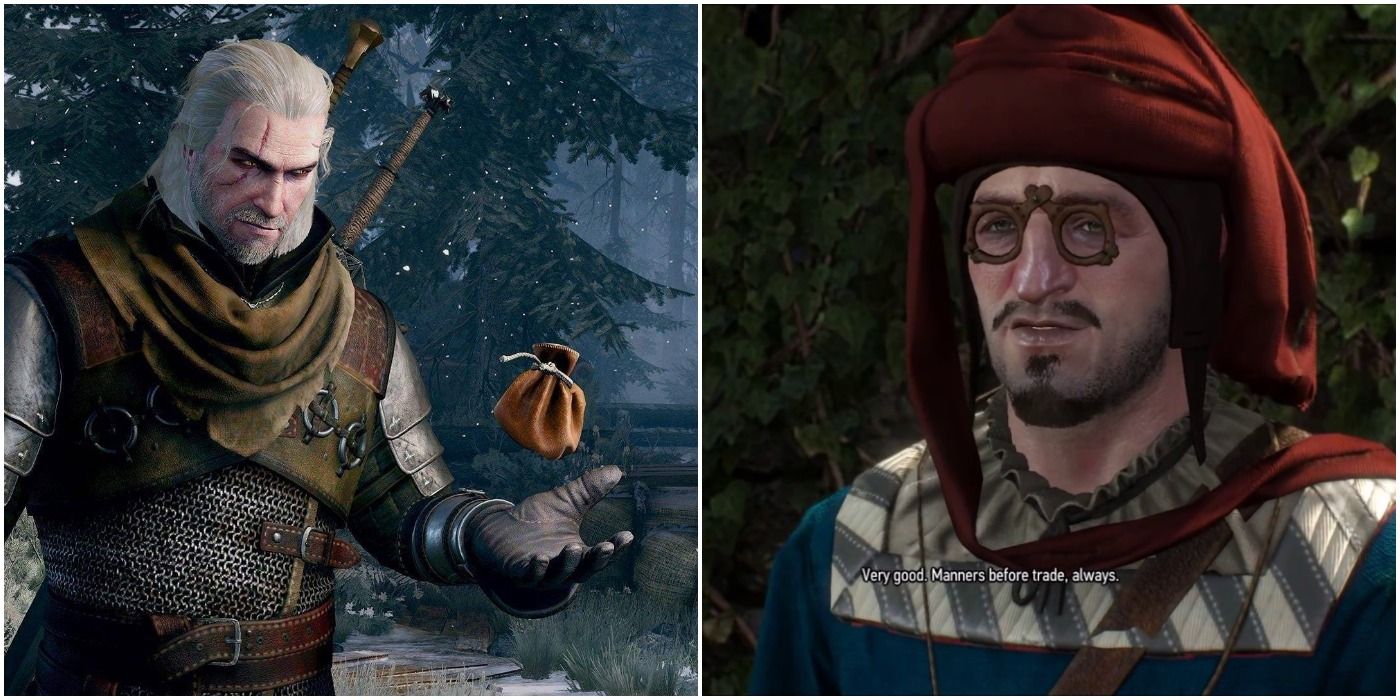
The Witcher 3: Wild Hunt is a gigantic game absolutely filled with intricate storylines and well-developed gameplay elements – it's no wonder it's considered the capstone on one of the most celebrated RPG series of all time. While it's been out for a number of years now, some players are just starting their journey in the world of The Witcher and finding out that it's a bit more complex than they thought.
RELATED: 10 Mistakes Everyone Makes While Playing The Witcher 3
The crafting system specifically was celebrated for being taught to the player organically throughout the game – but there are a few things that the game doesn't tell the player about crafting before they delve into this renowned RPG.
10 Crafting Components Are Weightless
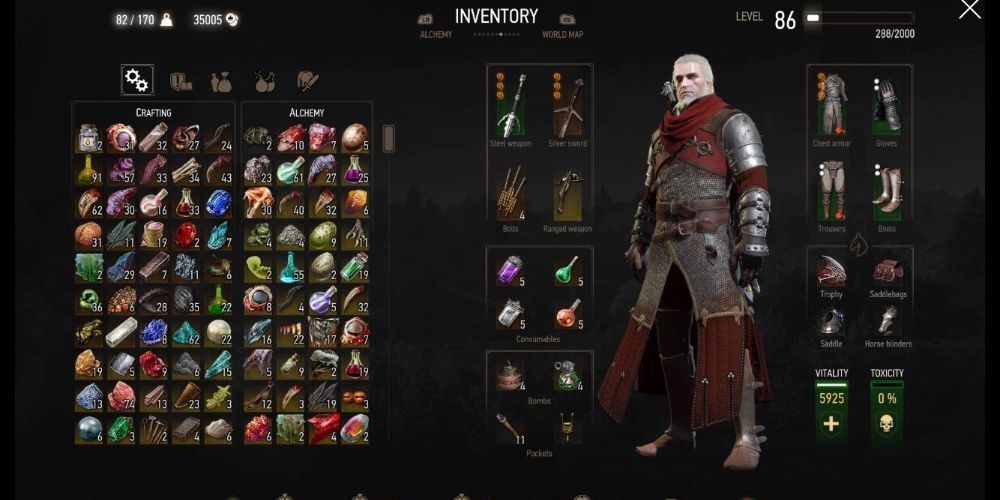
When the game initially launched, crafting components in The Witcher 3 had a slight weight to them. This means that Geralt couldn't hold as many materials as he wanted, and had to ration out what he picked up and what he left behind.
Soon after the game's launch, though, component weight was removed entirely. Players new to the game might be hesitant to pick up every material they see, but they should: Geralt will never be encumbered by his crafting materials.
9 Players Need Both Components And A Diagram
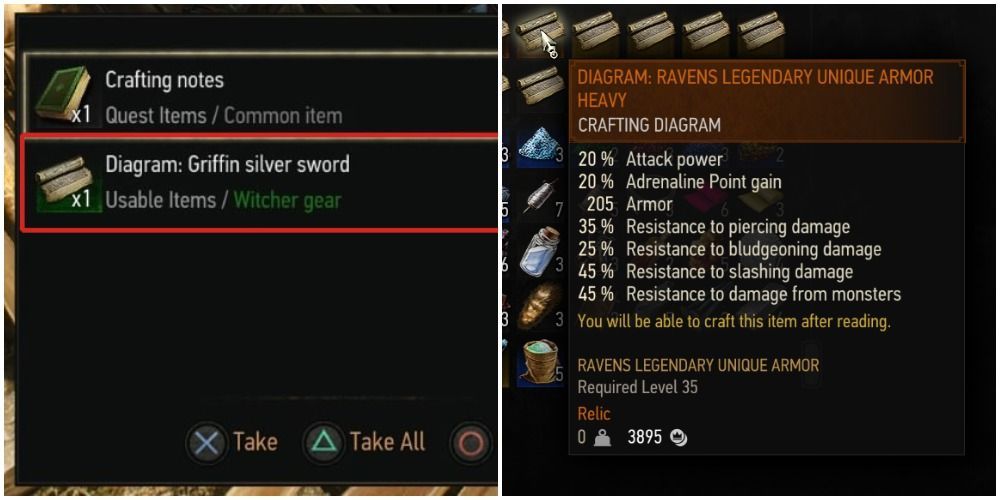
In other games with robust crafting systems like The Elder Scrolls V Skyrim and even Minecraft, players can craft just about anything provided they have the skill and the materials. In The Witcher 3, though, only basic items and gear are available to the player at first.
Geralt must unlock new items to craft by buying or finding diagrams. The most notorious of these are the various Witcher School diagrams spread throughout the world, which offer set bonuses if the player goes through the effort of unlocking them.
8 Geralt Can Only Do Alchemy On His Own
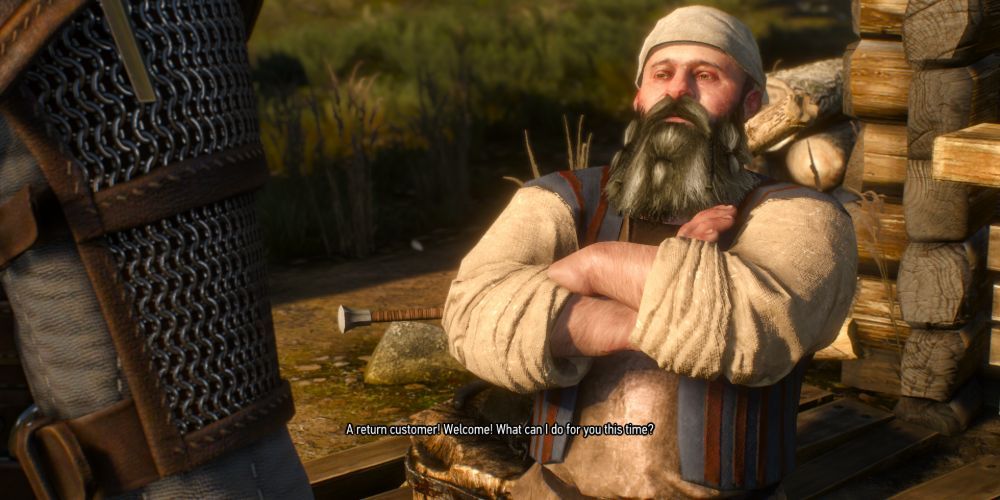
Geralt is a master of many things. He is an infamous Witcher, a master tracker, an unparalleled swordsman, and a skilled alchemist in the field. What he is not, though, is a weaponsmith or armorsmith.
RELATED: 10 Weirdest Encounters In The Witcher Series
In order to make armor and weaponry, the player must speak with Blacksmiths located around the various zones of the game. These blacksmiths will craft anything Geralt has the recipe for, and offer some of their own recipes and unique materials too.
7 Dismantling Items Is Very Efficient...
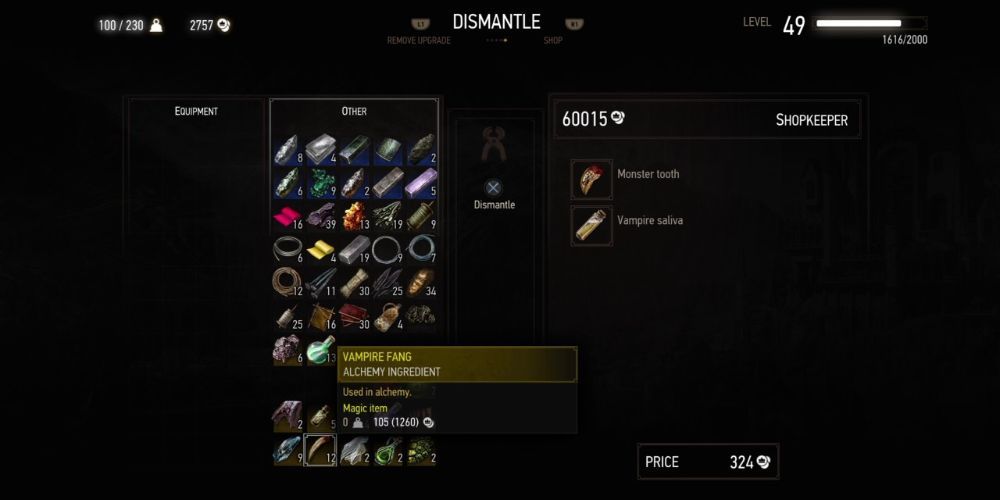
Not every RPG has a dismantling system, where old weapons and unused items can be repurposed into crafting materials. The Witcher 3 goes a step beyond and allows players to dismantle just about anything in their inventory – even cups, plates, and other trash.
The materials gained from dismantling an item have to do with that item's make. If the player dismantles an old sword, for example, they will likely get some metal and leather crafting components.
6 ...But The Player Must Pay A Fee To Dismantle

The only obstacle in the way of efficient dismantling in The Witcher 3 is that it isn't free – or even cheap, for first-time players. Dismantling costs anywhere from a small sum to a large fortune of crowns, depending on the item, and it can still only be done through specific NPCs.
However, one thing to consider is that it is still far more efficient to dismantle old weapons than to sell them, as crafting components are not cheap when bought from a vendor.
5 Buying Components From Vendors Is Inefficient
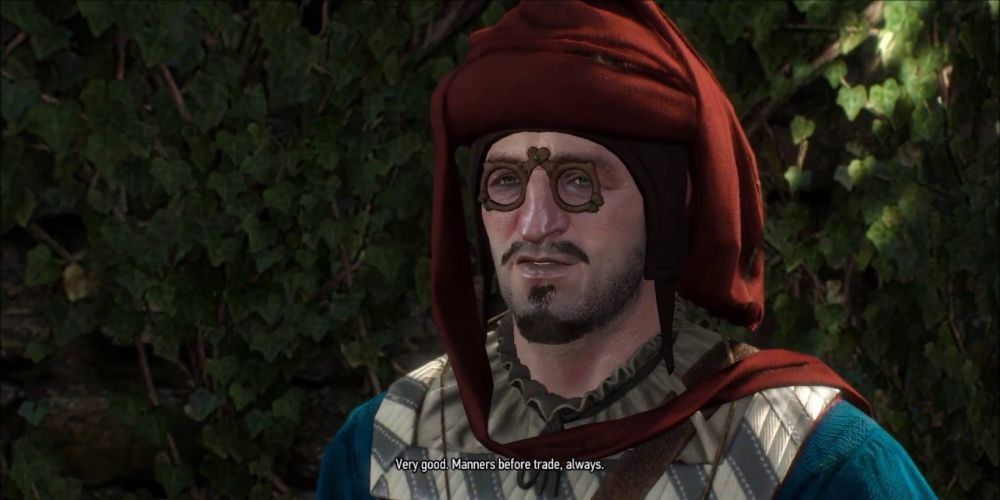
Weaponsmiths and armorsmiths offer a special service to Geralt if he finds himself out of a needed material: they will sell it to him, from the crafting screen, at no additional cost. The problem is, though is that the cost of crafting components is way higher than they are really worth.
Sometimes, a simple crafting ingredient can set the player back a significant amount of money. It's nearly always better to find materials from exploration or dismantling old gear.
4 Some Components Are Unique To Certain Areas

Some crafting components cannot be found anywhere except a specific spot or from a specific NPC. This makes sense on the base level; the player shouldn't expect to find underground mushrooms on top of a mountain, after all.
RELATED: 10 Secret Side Quests Everyone Missed In The Witcher 3
However, some high-level crafting components are only found in one or two places, or only sold by master blacksmiths. These components are used in the most powerful diagrams but are very expensive.
3 Some Components Must Be Crafted
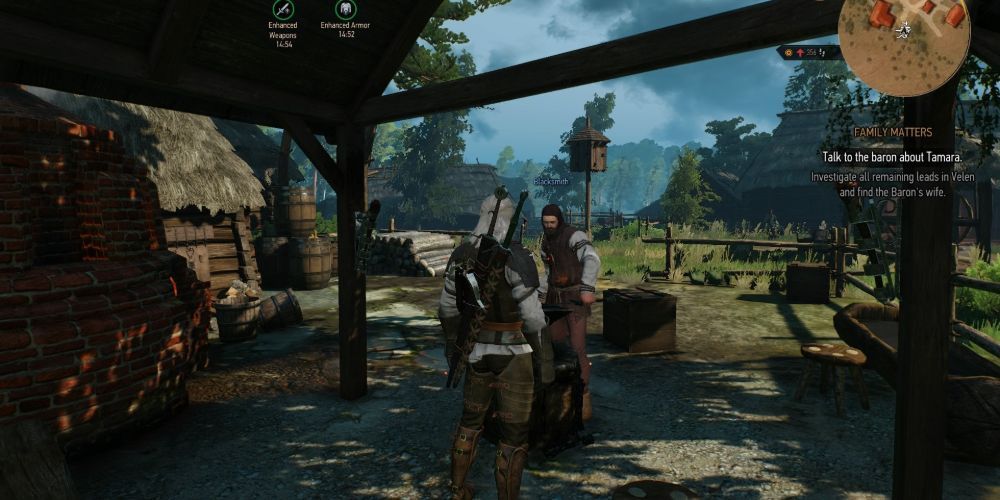
Just about every crafting component can be looted, or sold by a vendor, somewhere in the world of The Witcher 3. However, some materials are rarer than others because they must be crafted.
Crafting components like Infused Dust, Cured Leather, and Dark Steel Ingots (just to name a few) can only be created from the combination of other crafting components. These materials are typically more expensive than base crafting components sold at vendors.
2 Master-Level Crafting Is Unlocked In Quests
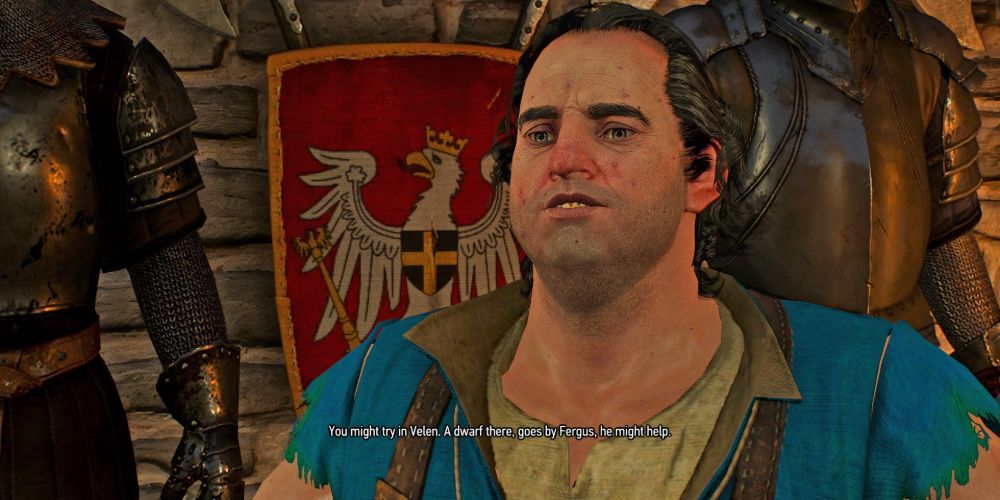
Crafting in the Witcher 3 is capstoned by master-level and grandmaster-level diagrams, only available to players who have completed the associated quest chains. Master blacksmiths, armorsmiths, and weaponsmiths are located in many different zones and both teach powerful diagrams and sell unique materials for those diagrams.
These quests can be long, and many of them require Geralt to be at a very high level. Don't take on these quests without understanding the level requirements and difficulty of the quest chain beforehand to give Geralt the best chance of survival.
1 The Best Armor In The Witcher 3 Is Crafted
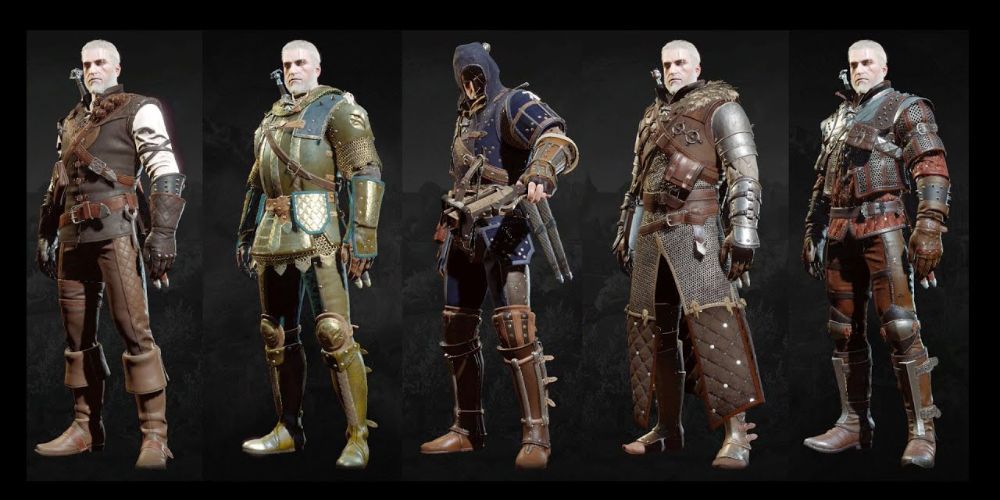
Armor, weapons, and gear can be found everywhere in The Witcher 3, and a lot of the time the progression from gear to gear feels very natural. However, to get the best gear in the game, one must take up crafting in a serious manner.
The Blood and Wine expansion added grandmaster-level crafting. While master-level crafters are spread throughout the world in the base game, grandmaster-level crafting is done through a single NPC in Beauclair, who can upgrade the Witcher armor Geralt wears to new heights... provided he proves himself with quests.
NEXT: The Witcher 3: The 10 Coolest Costumes In The Game, Ranked

